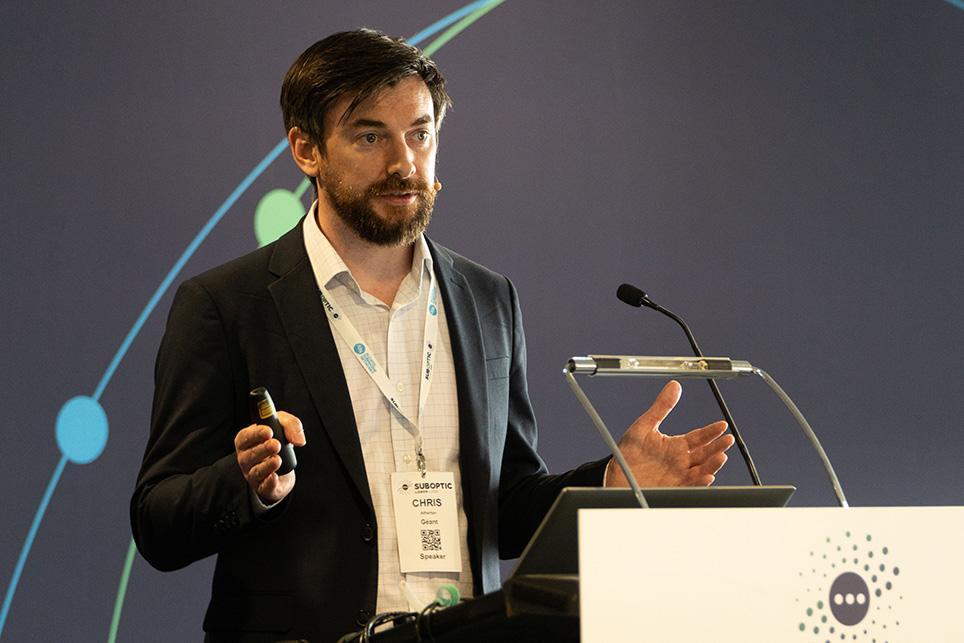GÉANTFrom 2–5 June, the SUBMERSE project joined the global submarine cable community at SubOptic 2025 in Lisbon. Unlike typical commercial trade shows, SubOptic is a triennial technical conference that brings together the leading players in submarine infrastructure to discuss the latest innovations. This year, fibre sensing was firmly on the agenda, with both a dedicated workshop and a full conference session.
SUBMERSE was represented in the fibre sensing track by Chris Atherton (GÉANT), who presented the project’s activities and ongoing technological developments. The event was also a valuable opportunity to connect with experts and industry partners shaping the future of submarine infrastructure.
Personal takeaways from Chris Atherton
“For me, one of the highlights was meeting Giuseppe Marra, a pioneer in fibre sensing research whose early work inspired many of us in the community. His research was one of the first steps into understanding what fibre sensing could achieve, and it’s fair to say I was a bit star struck.
Another moment that stood out was seeing, for the first time, a submarine sensing unit developed by ASN (Alcatel Submarine Networks), one of our SUBMERSE partners. This unit forms part of the SMART cable initiative, which places point sensors on the seabed while using telecoms cables for power and data transmission. Fibre sensing and SMART cables are complementary technologies, and seeing ASN’s milestone development up close was a reminder of how far the field has come, and how much potential lies ahead for scientific community.”
What’s new in fibre sensing
Several major technological developments highlighted the rapid progress in this field. One of them was the RF OTDR, an evolution of the SOP OTDR technique. First previewed at EGU, it made its commercial debut at SubOptic. Through collaboration with stakeholders, SUBMERSE has secured access to data from this new system for the remainder of the project. This technique is a significant step forward as it allows the full length of the fibre to be observed as long as there are repeater units on the cable. We’re looking forward to understanding what scientific discoveries our project researchers will uncover in the data.
ASN also announced that they are developing a next-generation Distributed Acoustic Sensing (DAS) unit which, when combined with specially designed submarine cables, will be able to extend the DAS signal past 16 repeaters. As one of our consortium partners, ASN’s work represents a major advancement in the field, opening up much longer stretches of cable to fibre sensing and offering the scientific community far greater opportunities to observe and understand our oceans.
Watch the video: At SubOptic 2025, our project team member Jan Petter Morten (ASN) demonstrates ASN’s DAS unit currently deployed at SUBMERSE sites in Norway, Portugal, and Greece. This is the same system that allows ordinary telecom cables to be transformed into powerful scientific tools.
SubOptic 2025, just as all events that we’ve been participating in this year, continue to highlight just how far fibre sensing has come in only a few years—and how central it is becoming to the submarine cable ecosystem.
With new technologies entering commercial use and stronger ties between industry and science, SUBMERSE is well positioned to benefit and contribute toward these developments.


